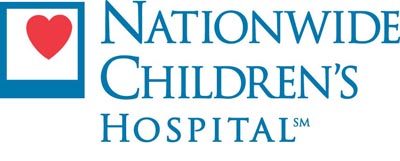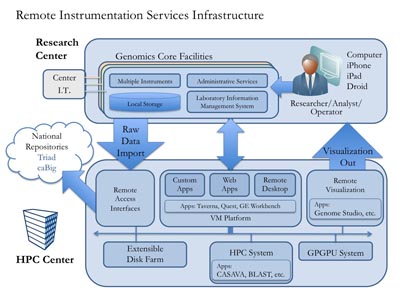Worried about her high fever and severe abdominal pain, a young couple rushed their baby daughter to the emergency department of Nationwide Children’s Hospital. Physicians there found a lump in her belly, and, after examining X-rays and blood work, confirmed the parents’ worst fear: their 18-month-old little girl had neuroblastoma, a rare pediatric cancer that involves the adrenal glands.
Several years ago, every child diagnosed with neuroblastoma would have received a standardized treatment regimen of chemotherapy, bone marrow transplant, surgery and radiation.
With the advancements in “omics” (genomics, proteomics, etc.) technologies and the aim to support personalized medicine, physicians would have the capability to modify this ‘one-size-fits-all’ approach through advanced computation. Physicians may now look at 10 to 12 different genes with a neuroblastoma tumor and conduct a complete biological and molecular analysis that leads to a diagnosis — and treatment recommendation — tailored to the child’s genetics.
Medical data is often so complex that using visualization to track the progression of the disease and potential cures is still computationally intensive. Visualization technologies can help simplify and magnify the drug identification process and greatly assist medical researchers in developing faster, more personalized medical solutions.
 |
 |
Working from an agreement inked last year to collaborate on informatics services, the Ohio Supercomputer Center (OSC) and The Research Institute at Nationwide Children’s Hospital have begun offering a production environment, services and support to speed discovery techniques of childhood diseases, from pediatric cancers to muscular dystrophy.
“Our intent is to assist institutions and medical professionals by developing innovative and cost-effective solutions to enhance their research and translational initiatives,” said Dave Billiter, director of the Research Informatics Core at Nationwide Children’s Biopathology Center. “We believe this partnership with OSC will aid in transforming pediatric patient treatment by adding a translational component to speed the ‘bench to bedside’ process essential to biomedical findings.”
Under the agreement, OSC provides The Research Institute with production-level storage, computation and software for running simulations on the Center’s sophisticated systems. In 2009, the Center deployed a $4 million expansion to its flagship IBM Glenn system dedicated to Ohio’s bioscience communities, such as those found at Nationwide Children’s Hospital. OSC also recently added storage upgrades as part of its plan to develop a statewide computational infrastructure for genomics data analysis.
“We are working with research hospitals and university medical centers to push forward a plan to synthesize computation and storage that allows medical researchers to focus on the science and expedite results, while realizing cost savings,” said Ashok Krishnamurthy, senior director of research at the Ohio Supercomputer Center. “OSC’s comprehensive collection of resources enables researchers to store, organize and visualization this data-intensive information.”
The Ohio Supercomputer Center (OSC) is a catalytic partner of Ohio universities and industries, providing a reliable high performance computing and high performance networking infrastructure for a diverse statewide/regional community including education, academic research, industry, and state government. OSC promotes and stimulates computational research and education in order to act as a key enabler for the state's aspirations in advanced technology, information systems, and advanced industries. For more, visit www.osc.edu.